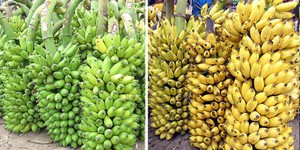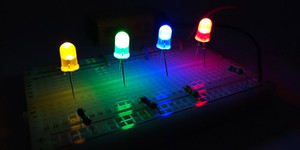Responsible Consumption and Production Science Projects (68 results)
The United Nations Sustainable Development Goals (UNSDGs) are a blueprint to achieve a better and more sustainable future for all.
These projects explore topics key to Responsible Consumption and Production: Ensure sustainable consumption and production patterns.
These projects explore topics key to Responsible Consumption and Production: Ensure sustainable consumption and production patterns.
|
Select a resource
Filter by
Coding Projects
Sort by
|
The iodine clock reaction is a favorite demonstration reaction in chemistry classes that usually requires toxic or hazardous chemicals. During the reaction, two clear liquids are mixed, resulting in another clear liquid. After some time, the solution suddenly turns dark blue. The reaction is called a clock reaction because the amount of time that elapses before the solution turns blue depends on the concentrations of the starting chemicals. In this green chemistry project, you will use a…
Read more
"Plastic made from milk" —that certainly sounds like something made-up. If you agree, you may be
surprised to learn that in the early 20th century, milk was used to make many different plastic
ornaments —including jewelry for Queen Mary of England! In this chemistry science project, you can figure out the best recipe to make your own milk plastic (usually called casein plastic) and use it to make beads, ornaments, or other items.
Read more
New
Have you ever seen a waiter balance an entire tray of drinks without spilling any? How do they do it? Do you think you could build a robot waiter that can do the same thing? In this project, you will learn how to build a self-balancing robotic tray. You can incorporate the auto-leveling tray into one of our many other robotics projects, like the Bluebot or robotic arm.
Read more
Have you ever wondered why apple slices turn brown once you cut them, or why a yellow banana gets dark spots over time? In this project you will find out why this happens, and how you can keep your apple slices looking fresh!
Read more
Water is a valuable resource, and water shortages are a serious problem in many parts of the world. The problem can be made worse by people who waste water; for example, by watering a garden or using sprinklers on their lawn (or a farmer taking care of an entire field) when it has rained recently or the soil is already moist. How can you help conserve water and prevent such waste? One way is to build an electronic soil moisture sensor. This project will show you how to build a circuit that…
Read more
Can you imagine clothing, handbags, or shoes made from seaweed or spider silk? To become more sustainable, the textile industry is looking for ways to develop more eco-friendly fabrics. Biofabrics derived from living organisms such as seaweed or bacteria have been proposed as a potential alternative to conventional fibers. In this science project, you will make several biofabrics from alginate (seaweed) and conduct tests to find out which one is most suitable as a textile replacement.
Read more
New
Have you ever walked next to your favorite ocean, lake, or creek and seen plastic waste everywhere? Have you ever thought about how much plastic breaks down into microplastics and pollutes waterways? Scientists are coming up with new ways to remove these microplastics from our waterways, and now you can test them out for yourself at home.
Read more
Have you ever dreamed of a world where you could take the scraps from last night's dinner and toss them into your car's fuel tank and make gas? Well, we're not quite in "Back to the Future" yet, but in this energy science fair project, you'll discover that food scraps, dead plants, sawdust, and other decaying organic matter, called biomass are a rich source of energy. You can get energy out of biomass by burning it, turning it into a liquid, or by turning it into a gas called biogas. You've…
Read more
So you've just finished mowing the lawn on a hot summer day, and you'd like a cold, refreshing drink as a reward. You look in the fridge, and oops! it's empty. The sodas are still sitting in the cupboard, at room temperature. What's the fastest way to get that soda down to a cold, drinkable temperature with materials readily at hand?
Read more
You have most likely witnessed the change that occurs as a banana ripens It changes from green and relatively hard to yellow and soft. The flavor also changes, from bitter to sweet. What happens during ripening? One big change is the increase in sugar content. In this food science fair project, you will measure how the sugar content of a banana changes as it ripens.
Read more
LED lighting can add a cool ambient effect to a room, a device, or even the inside of a car. You may know that LED lights are more efficient than incandescent bulbs, but do you know how to design and build your own LED circuit? How would you minimize power consumption and maximize efficiency? In this project you will learn how to design and build your own LED circuits so you can add LED lighting effects wherever you want. Check out this page for more LED science projects.
Read more
Do you ever have notebooks and papers left over from the school year? Do you recycle them? What if you could use them to start your garden instead? In this science project, you will upcycle old paper into seed cards and test how paper compares to other materials as a fertilizer!
Read more
|
















